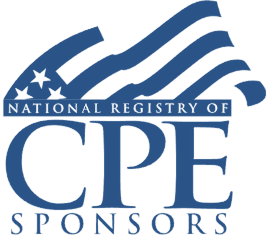Welcome! Strafford is now BARBRI! The expert courses you know from the trusted global leader in legal education.
Description
S corporations provide significant advantages to shareholders but involve careful tax planning to minimize unintended tax liability. Tax professionals often fail to recognize crucial distinctions from other pass-through entities and critical issues for distributions of cash and property to shareholders under current tax law.
Specific aspects of S corps with potentially significant tax implications include the treatment of contributing shareholder tax basis, distributions, shareholder loans, and transfers. Advisers must also consider issues regarding salary versus income distributions, Sec. 163(j) limitations, other provisions under current tax rules, and related IRS guidance.
Tax professionals must be mindful of the nuances of current tax law and the distinctions of S corporations compared to other pass-through entities.
Listen as Eric Homsi, Counsel at Crowell & Moring, examines key factors in determining the taxability of distributions of cash and property, shareholder loans, salary versus income distributions, increases and decreases of shareholder basis, and other key issues regarding the taxation of S corporation distributions.
Presented By

Mr. Homsi is a counsel in the firm's Tax Group, resident in the New York office. His practice concentrates primarily on advising public and private companies with respect to business tax issues associated with structuring, negotiating, and executing domestic and cross-border acquisitions, divestitures, and restructurings. Mr. Homsi also counsels clients on tax issues associated with real estate investments and joint ventures, equity and debt securities offerings, and other transactions where tax considerations play an important role. In addition, he assists multinational businesses with inbound and outbound tax planning and strategy.
-
This 90-minute webinar is eligible in most states for 1.5 CLE credits.
-
BARBRI is a NASBA CPE sponsor and this 90-minute webinar is accredited for 1.5 CPE credits.
-
BARBRI is an IRS-approved continuing education provider offering certified courses for Enrolled Agents (EA) and Tax Return Preparers (RTRP).
-
Live Online
On Demand
Date + Time
- event
Friday, October 4, 2024
- schedule
1:00 p.m. ET./10:00 a.m. PT
Outline
- Tax challenges of S corporations
- Recent regulations and IRS guidance
- IRC Section 163(j)
- Distributions and transfers of interest
Benefits
The panelist will review these and other key issues:
- What are the critical tax challenges of S corporations under current tax law?
- What issues arise for cash and property distributions and transfers of interest?
- What is the impact of Sec. 163(j) limitations?
- When selling equity interest in an S corporation, what are the pitfalls?
NASBA Details
Learning Objectives
After completing this course, you will be able to:
- Identify key tax challenges of S corporations under current tax law
- Ascertain methods for handling tax issues for cash distributions, class of stock, deferred compensation, and transfers of interest
- Ascertain practices to overcome problems relating to determining QBI deduction for S corporations
- Understand the impact of Sec. 163(j) limitations and carried interest regulation
- Field of Study: Taxes
- Level of Knowledge: Intermediate
- Advance Preparation: None
- Teaching Method: Seminar/Lecture
- Delivery Method: Group-Internet (via computer)
- Attendance Monitoring Method: Attendance is monitored electronically via a participant's PIN and through a series of attendance verification prompts displayed throughout the program
- Prerequisite: Three years+ business or public firm experience at mid-level within the organization, preparing complex tax forms and schedules, supervising other preparers/accountants. Specific knowledge of Subchapter S rules and operations; familiarity with passive income rules and concept of built-in gain.

BARBRI is registered with the National Association of State Boards of Accountancy (NASBA) as a sponsor of continuing professional education on the National Registry of CPE Sponsors. State boards of Accountancy have final authority on the acceptance of individual courses for CPE Credits. Complaints regarding registered sponsons may be submitted to NASBA through its website: www.nasbaregistry.org.

BARBRI is an IRS-approved continuing education provider offering certified courses for Enrolled Agents (EA) and Tax Return Preparers (RTRP).

BARBRI CE webinars-powered by Strafford-are backed by our 100% unconditional money-back guarantee: If you are not satisfied with any of our products, simply let us know and get a full refund. Contact us at 1-800-926-7926 .
Unlimited access to premium CLE courses:
- Annual access
- Available live and on-demand
- Best for attorneys and legal professionals
Unlimited access to premium CPE courses.:
- Annual access
- Available live and on-demand
- Best for CPAs and tax professionals
Unlimited access to premium CLE, CPE, Professional Skills and Practice-Ready courses.:
- Annual access
- Available live and on-demand
- Best for legal, accounting, and tax professionals
Unlimited access to Professional Skills and Practice-Ready courses:
- Annual access
- Available on-demand
- Best for new attorneys
Related Courses

Tax Aspects of LLC Drafting: Target Allocations; Key Negotiated Tax Terms in JVAs; Top 10 Tax Mistakes When Drafting Agreements
Thursday, December 4, 2025
1:00 p.m. ET./10:00 a.m. PT
Recommended Resources
How CPE Can Bridge the Gap Between What You Know and What You Need to Know
- Career Advancement
Gain a Competitive Edge Through Efficient CPE Strategies
- Learning & Development
- Business & Professional Skills
- Career Advancement